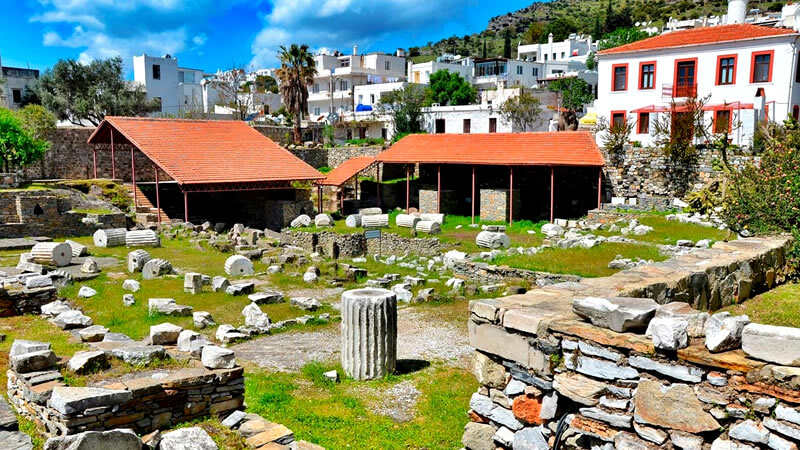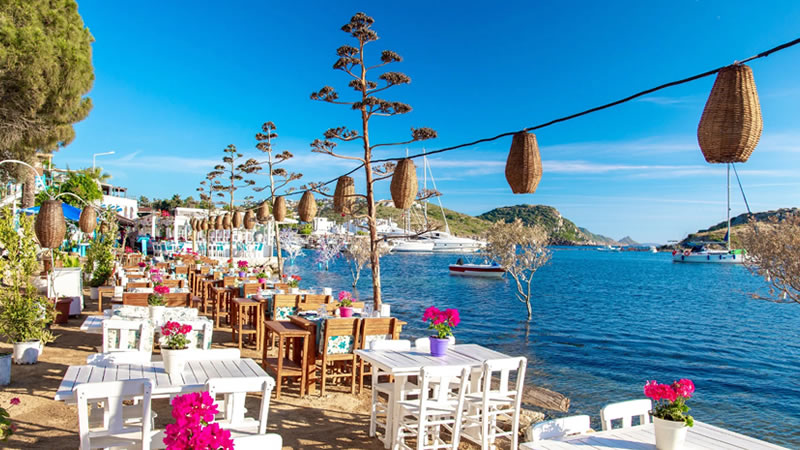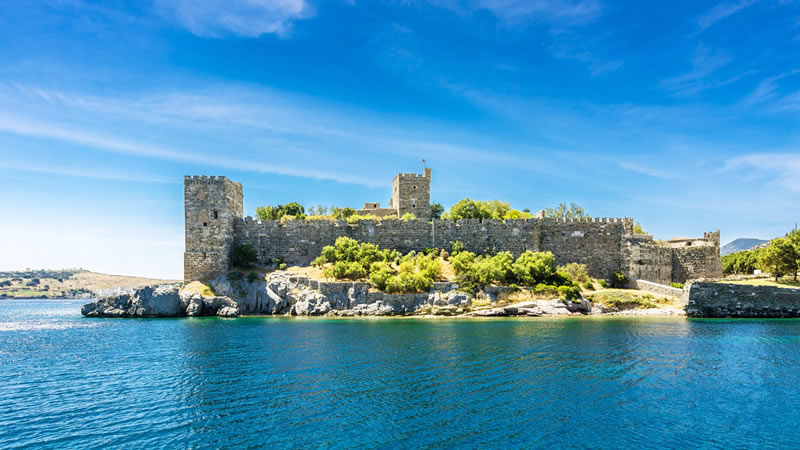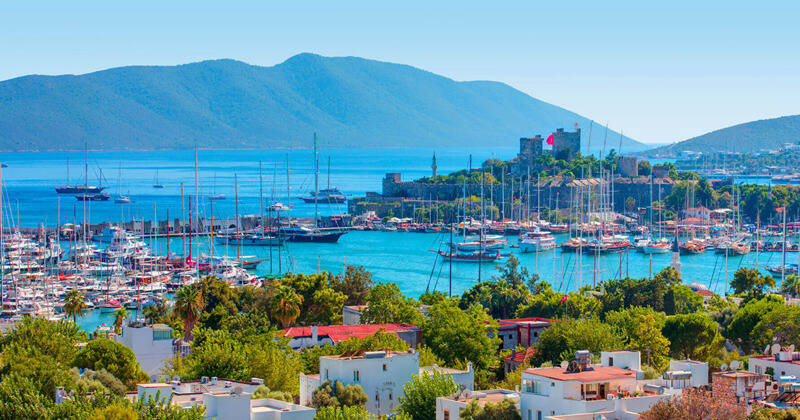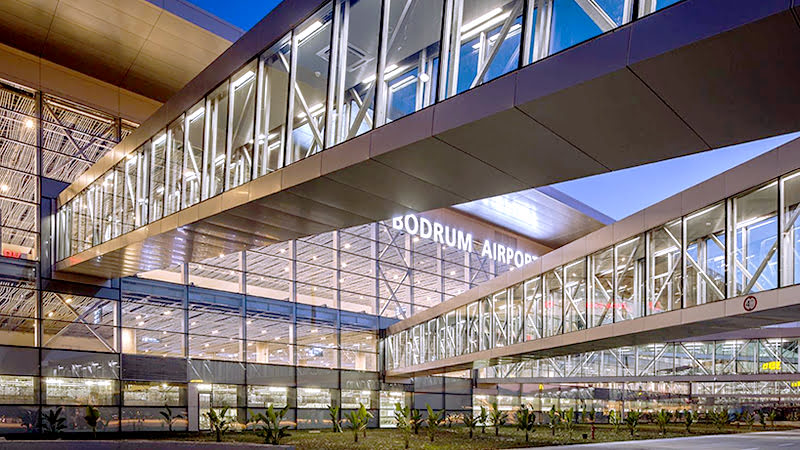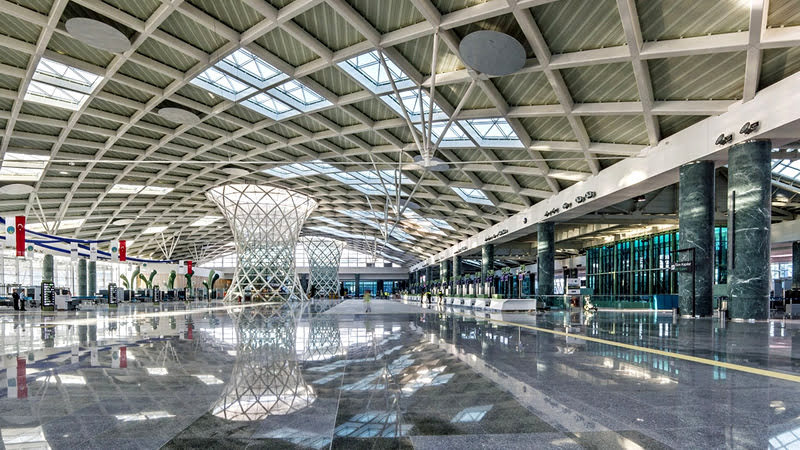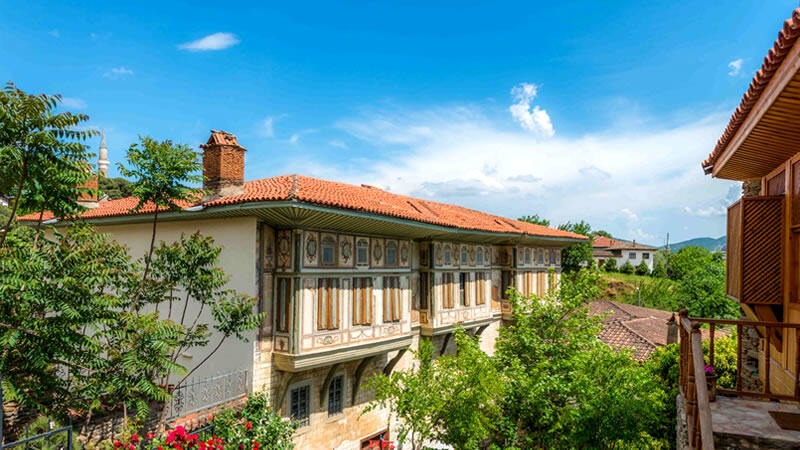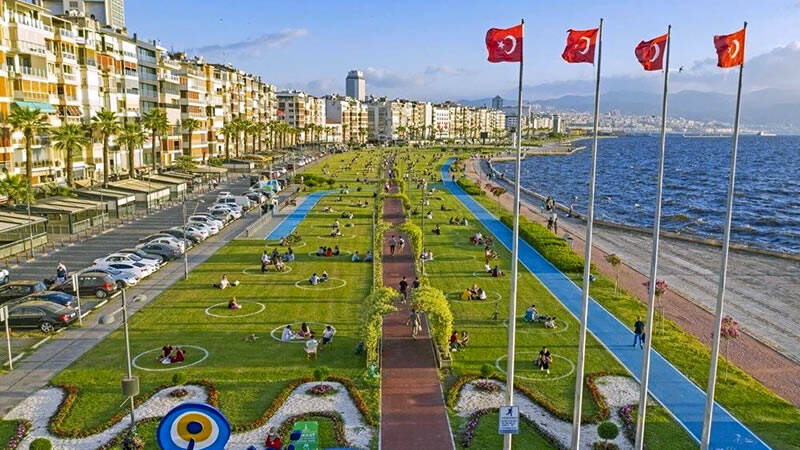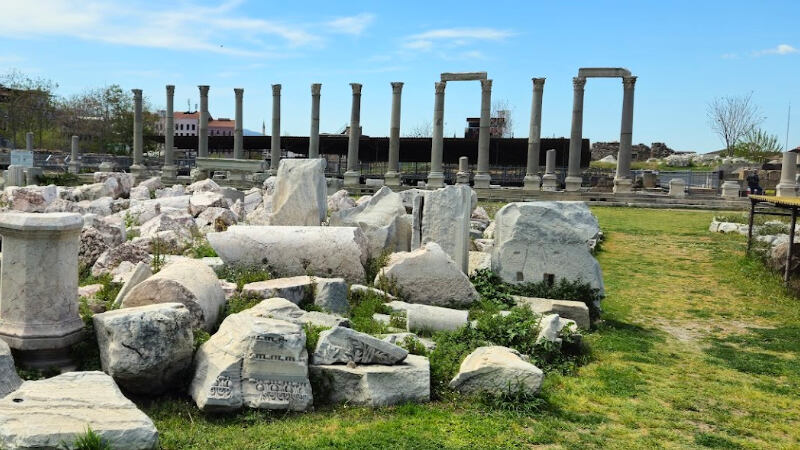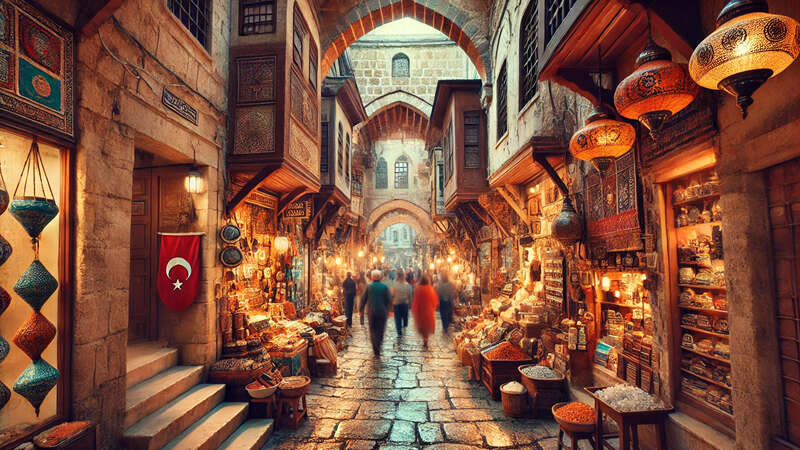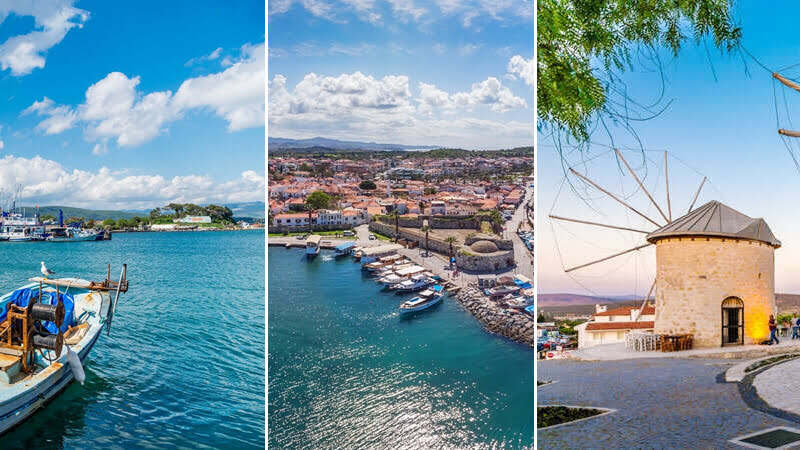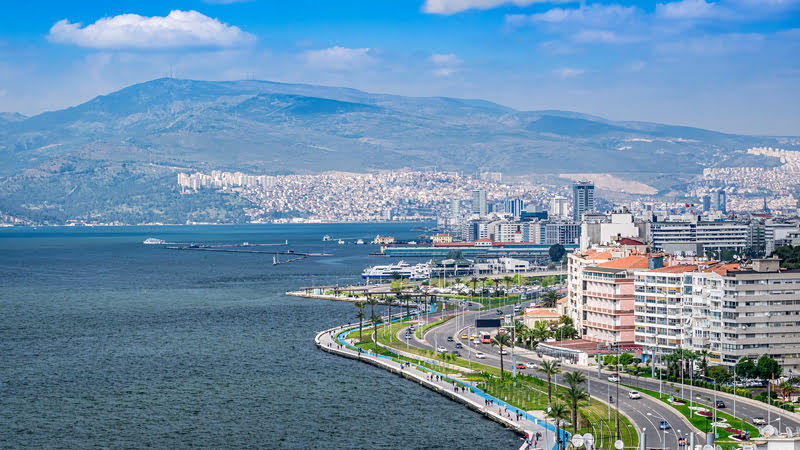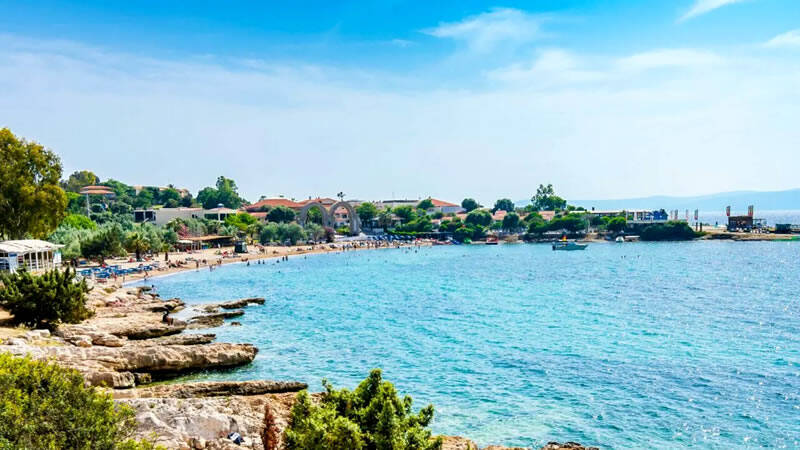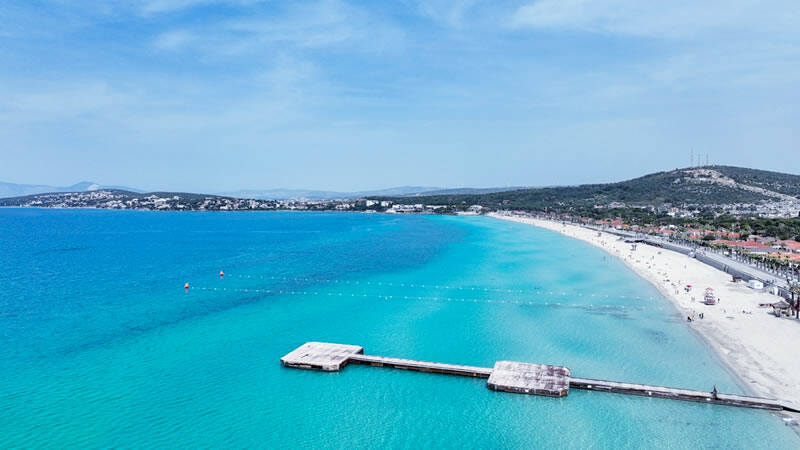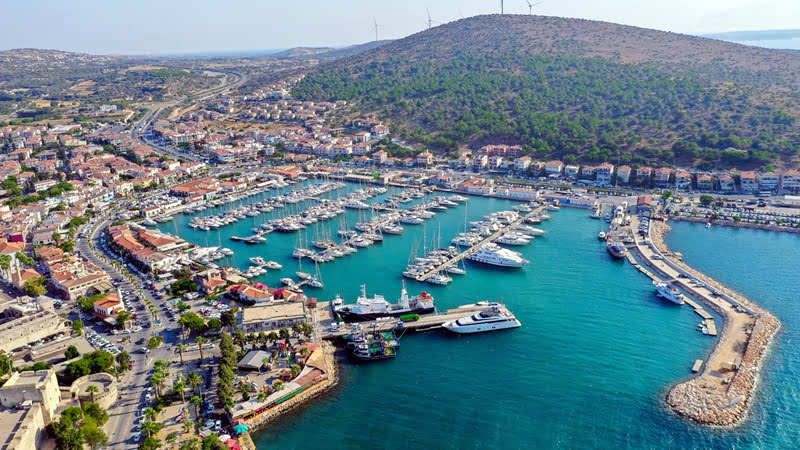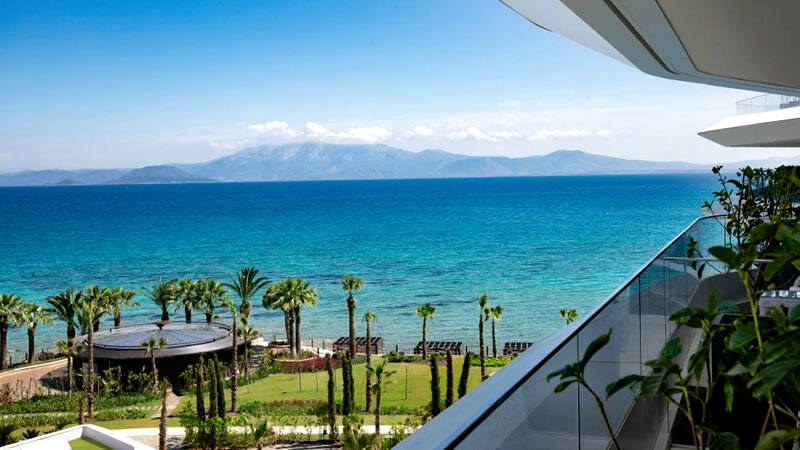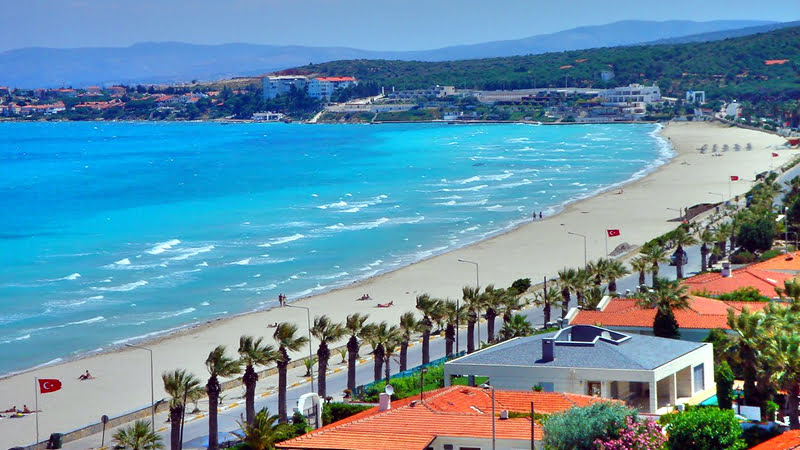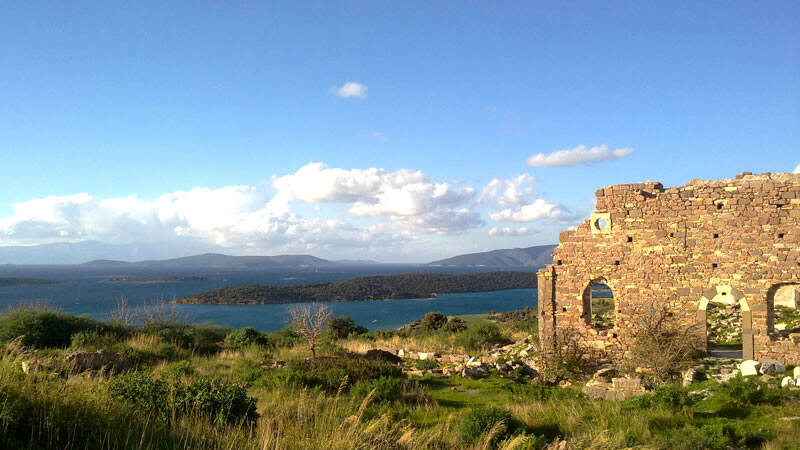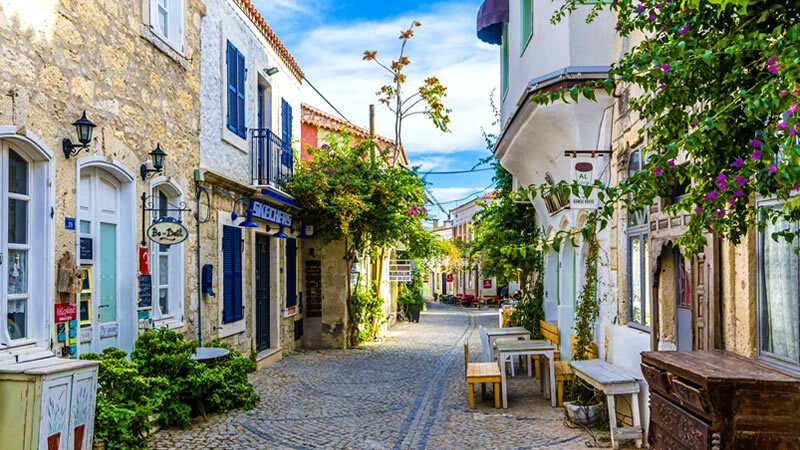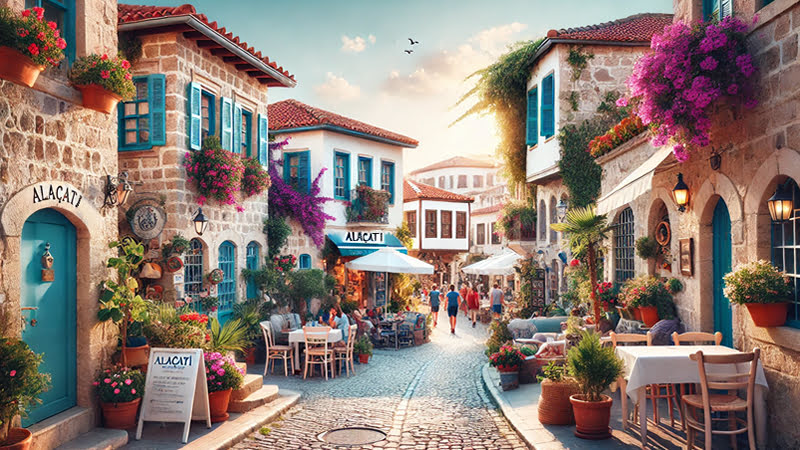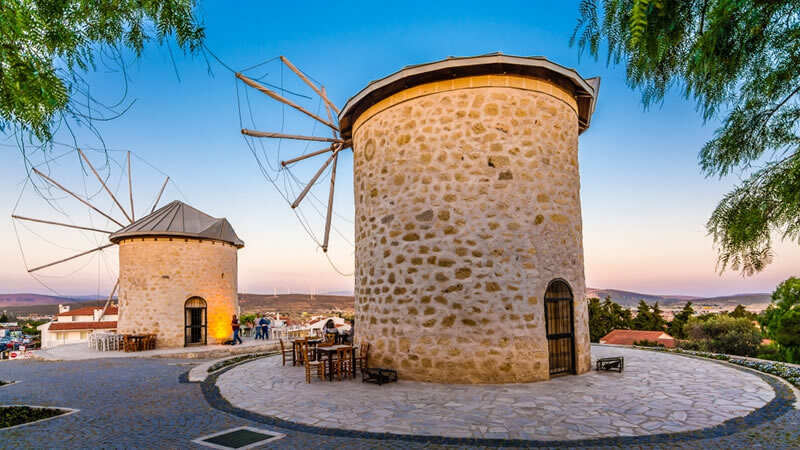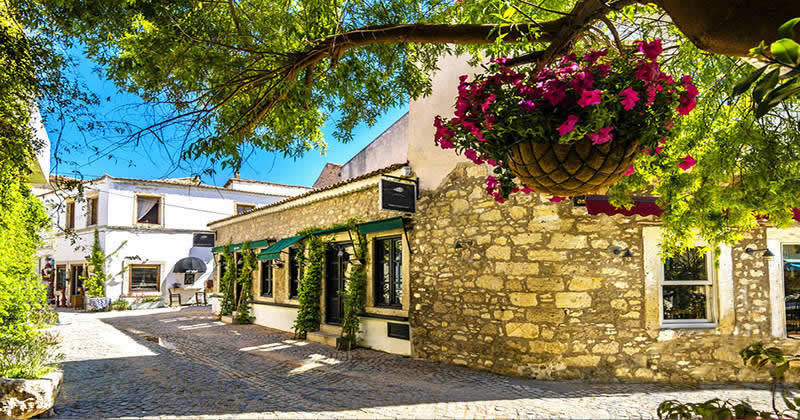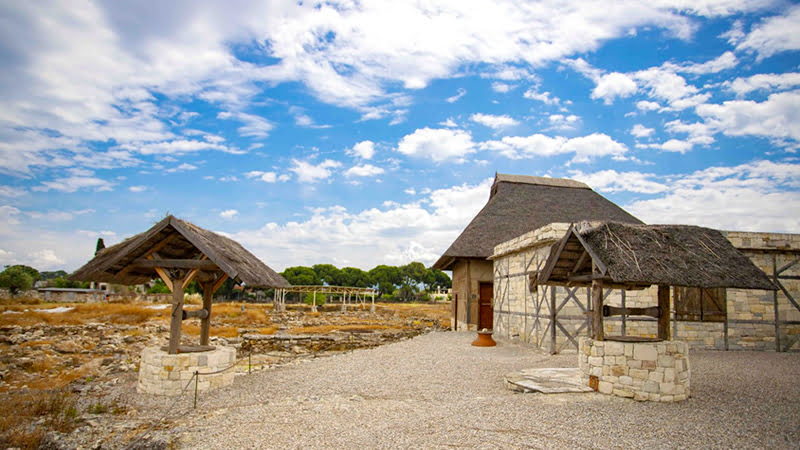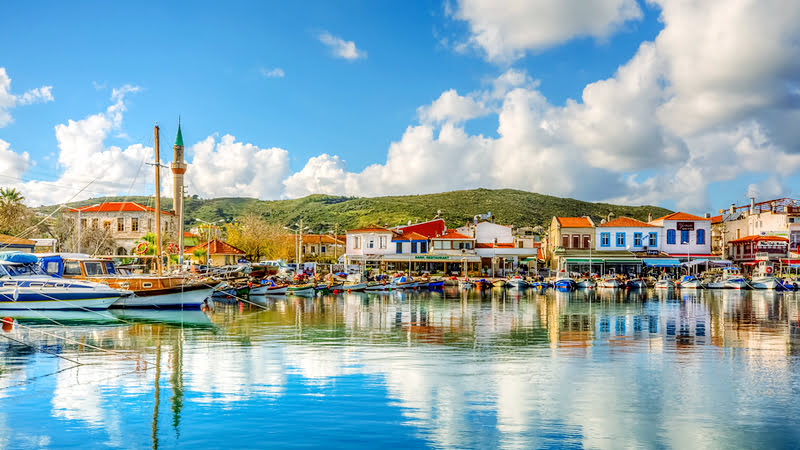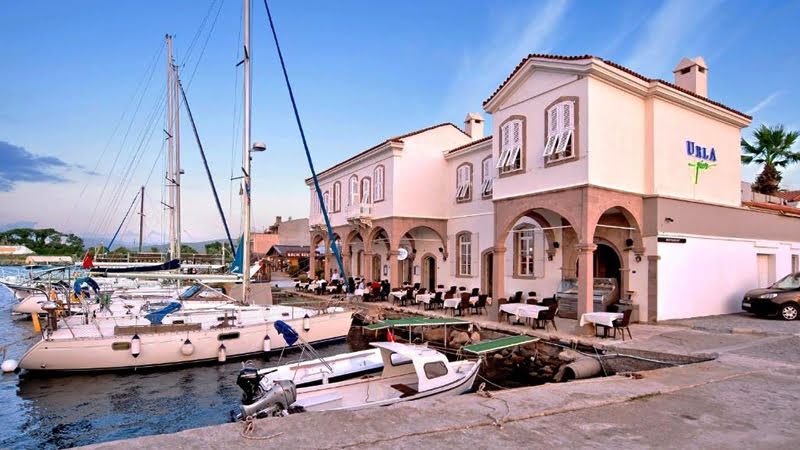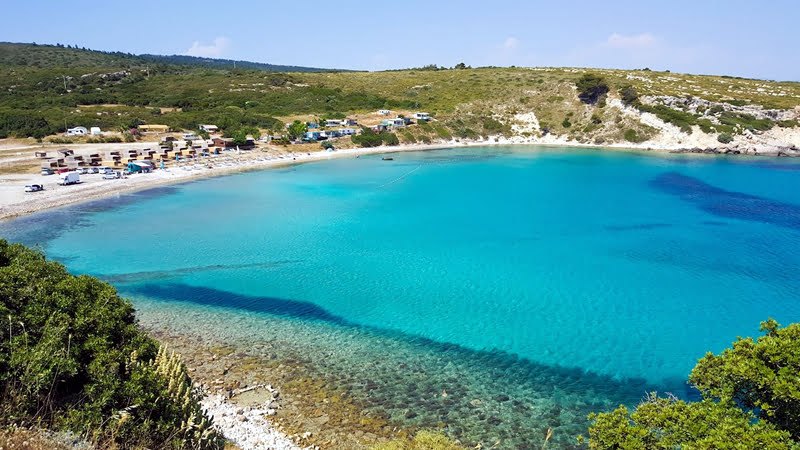Bodrum Ancient Theater - A Fascinating Intersection of History and Art
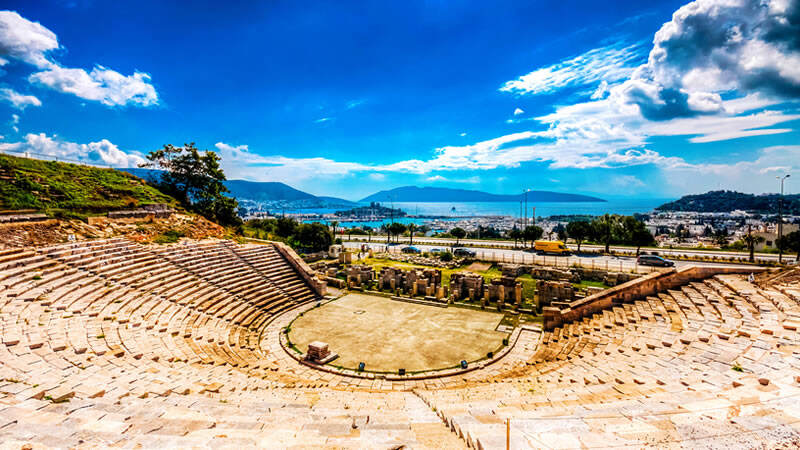
Bodrum, one of Türkiye's most popular tourist destinations, also stands out with its rich historical background. This unique peninsula hosts numerous historical structures that bring traces of the ancient world to the present day. Located in the heart of Bodrum and one of the city's most iconic landmarks, the Bodrum Ancient Theater offers visitors an unforgettable experience with its historical and artistic value. This article will delve into the history, architectural features, functions, and current significance of the Bodrum Ancient Theater.
The Bodrum Ancient Theater boasts a deep-rooted history dating back to the 4th century BCE. It was constructed as one of the most significant structures of the ancient city of Halicarnassus. Halicarnassus, one of the prominent cities of its time, was ruled by Mausolus, a satrap of the Persian Empire. After Mausolus's death, the theater was completed by his wife and sister, Artemisia, and became the cultural center of the city during that era.
During the Roman Empire, the theater acquired the typical features of Roman theaters, and its capacity was increased. In this period, the theater hosted events such as gladiator fights and wild animal shows, diversifying its usage. Restoration works carried out throughout history have helped the theater retain its current form. Notably, extensive restorations starting in the 1970s preserved its structural integrity and contributed to making it a significant tourist attraction.
The Bodrum Ancient Theater exhibits the classical characteristics of ancient Greek architecture. The semi-circular seating area slopes down toward the stage, designed to provide the audience with the best view of the performances. The theater has a capacity of approximately 13,000 people, making it one of the largest theaters of the ancient period.
The theater comprises three main sections: the seating area known as the "cavea," the space in front of the stage called the "orchestra," and the stage building referred to as the "skene." The cavea consists of staircases and seating rows made of stone blocks. These rows were constructed on an incline to ensure that spectators could easily view the stage.
The orchestra area, initially designated for the choir in Greek theaters, was later used for events like gladiator fights and animal shows during the Roman era. The skene, located behind the stage, served as a preparation area for performers and as an entry point to the stage. This section featured decorative columns and sculptures.
The craftsmanship in the stonework of the theater is remarkable. The stone blocks were sourced from local natural rocks and meticulously crafted by artisans of the era. While the Bodrum Ancient Theater shares similarities with other notable theaters of its time, its unique acoustic properties, influenced by its geographical location, set it apart. These acoustics allowed the audience to hear stage performances clearly.
The Bodrum Ancient Theater was not solely used for theatrical performances in ancient times. It also hosted various religious ceremonies, festivals, and public meetings. The plays performed at the theater included works by renowned tragedy and comedy writers of the time, offering audiences both entertainment and educational experiences as part of ancient Greek culture.
During the Roman period, the theater's functions expanded to include gladiator fights and wild animal shows. However, it gradually transitioned away from such events and continued to be primarily used for artistic performances. This shift helped preserve the theater's artistic identity, which remains intact to this day.
On its stage, the theater hosted festivals dedicated to deities like Dionysus and plays inspired by Greek mythology. The captivating atmosphere of the ancient theater allowed audiences to experience the finest examples of genres such as tragedy and comedy. Additionally, the theater served as a venue for social gatherings where significant decisions were made, making it a vital part of community life.
Today, the Bodrum Ancient Theater remains one of Bodrum’s most important cultural and tourist attractions. Having withstood the test of time, it has been restored to host modern artistic events. Each year, countless local and international tourists visit this historical structure in Bodrum.
The events held at the theater significantly enrich Bodrum’s cultural life. The Bodrum Music Festival, held especially during the summer months, offers art enthusiasts an exceptional opportunity to experience the theater's ambiance. Through such events, the Bodrum Ancient Theater continues its legacy as a center of art, just as it was in ancient times.
Additionally, the theater hosts concerts by both local and international artists. These events create unforgettable moments for audiences by blending the historical atmosphere of the theater with modern music. During these performances, the theater's historical ambiance combines with modern lighting and sound systems, delivering a unique experience. Furthermore, various cultural events held at the theater contribute to Bodrum’s prominent place in the art and culture scene.
The Bodrum Ancient Theater is conveniently located close to Bodrum’s city center, making it easily accessible for visitors. Bodrum transfer services offer a comfortable way to reach the theater. For tourists staying in Bodrum, reliable companies like iZMiRCAR Car Rental provide car rental options, ensuring a more convenient journey to the theater.
Open year-round, the theater offers visitors an atmosphere rich in history and art. Visitors can explore traces of the ancient world while enjoying breathtaking views of Bodrum. The hill where the theater is situated provides a stunning panorama of Bodrum Castle and the harbor, allowing visitors to embark on both a historical journey and a discovery of Bodrum’s natural beauty.
After touring the Bodrum Ancient Theater, visitors can also visit the nearby Myndos Gate. This gate, a part of Halicarnassus's city walls, served as a key entrance to the ancient city and stands as another significant historical stop near the theater.
The Bodrum Ancient Theater is not only one of Bodrum's but also one of Türkiye’s most important cultural heritage sites. Having hosted numerous significant events throughout its history, this structure continues to be an integral part of Bodrum’s cultural identity. With its architectural features, artistic legacy, and present-day significance, the theater offers a unique experience to its visitors. For anyone traveling to Bodrum, this ancient structure is an ideal stop for a journey through history and art.
The History of Bodrum Ancient Theater
The Bodrum Ancient Theater boasts a deep-rooted history dating back to the 4th century BCE. It was constructed as one of the most significant structures of the ancient city of Halicarnassus. Halicarnassus, one of the prominent cities of its time, was ruled by Mausolus, a satrap of the Persian Empire. After Mausolus's death, the theater was completed by his wife and sister, Artemisia, and became the cultural center of the city during that era.
During the Roman Empire, the theater acquired the typical features of Roman theaters, and its capacity was increased. In this period, the theater hosted events such as gladiator fights and wild animal shows, diversifying its usage. Restoration works carried out throughout history have helped the theater retain its current form. Notably, extensive restorations starting in the 1970s preserved its structural integrity and contributed to making it a significant tourist attraction.
Architectural Features and Design
The Bodrum Ancient Theater exhibits the classical characteristics of ancient Greek architecture. The semi-circular seating area slopes down toward the stage, designed to provide the audience with the best view of the performances. The theater has a capacity of approximately 13,000 people, making it one of the largest theaters of the ancient period.
The theater comprises three main sections: the seating area known as the "cavea," the space in front of the stage called the "orchestra," and the stage building referred to as the "skene." The cavea consists of staircases and seating rows made of stone blocks. These rows were constructed on an incline to ensure that spectators could easily view the stage.
The orchestra area, initially designated for the choir in Greek theaters, was later used for events like gladiator fights and animal shows during the Roman era. The skene, located behind the stage, served as a preparation area for performers and as an entry point to the stage. This section featured decorative columns and sculptures.
The craftsmanship in the stonework of the theater is remarkable. The stone blocks were sourced from local natural rocks and meticulously crafted by artisans of the era. While the Bodrum Ancient Theater shares similarities with other notable theaters of its time, its unique acoustic properties, influenced by its geographical location, set it apart. These acoustics allowed the audience to hear stage performances clearly.
Functions and Artistic Activities
The Bodrum Ancient Theater was not solely used for theatrical performances in ancient times. It also hosted various religious ceremonies, festivals, and public meetings. The plays performed at the theater included works by renowned tragedy and comedy writers of the time, offering audiences both entertainment and educational experiences as part of ancient Greek culture.
During the Roman period, the theater's functions expanded to include gladiator fights and wild animal shows. However, it gradually transitioned away from such events and continued to be primarily used for artistic performances. This shift helped preserve the theater's artistic identity, which remains intact to this day.
On its stage, the theater hosted festivals dedicated to deities like Dionysus and plays inspired by Greek mythology. The captivating atmosphere of the ancient theater allowed audiences to experience the finest examples of genres such as tragedy and comedy. Additionally, the theater served as a venue for social gatherings where significant decisions were made, making it a vital part of community life.
Bodrum Ancient Theater Today
Today, the Bodrum Ancient Theater remains one of Bodrum’s most important cultural and tourist attractions. Having withstood the test of time, it has been restored to host modern artistic events. Each year, countless local and international tourists visit this historical structure in Bodrum.
The events held at the theater significantly enrich Bodrum’s cultural life. The Bodrum Music Festival, held especially during the summer months, offers art enthusiasts an exceptional opportunity to experience the theater's ambiance. Through such events, the Bodrum Ancient Theater continues its legacy as a center of art, just as it was in ancient times.
Additionally, the theater hosts concerts by both local and international artists. These events create unforgettable moments for audiences by blending the historical atmosphere of the theater with modern music. During these performances, the theater's historical ambiance combines with modern lighting and sound systems, delivering a unique experience. Furthermore, various cultural events held at the theater contribute to Bodrum’s prominent place in the art and culture scene.
Visiting Bodrum Ancient Theater
The Bodrum Ancient Theater is conveniently located close to Bodrum’s city center, making it easily accessible for visitors. Bodrum transfer services offer a comfortable way to reach the theater. For tourists staying in Bodrum, reliable companies like iZMiRCAR Car Rental provide car rental options, ensuring a more convenient journey to the theater.
Open year-round, the theater offers visitors an atmosphere rich in history and art. Visitors can explore traces of the ancient world while enjoying breathtaking views of Bodrum. The hill where the theater is situated provides a stunning panorama of Bodrum Castle and the harbor, allowing visitors to embark on both a historical journey and a discovery of Bodrum’s natural beauty.
After touring the Bodrum Ancient Theater, visitors can also visit the nearby Myndos Gate. This gate, a part of Halicarnassus's city walls, served as a key entrance to the ancient city and stands as another significant historical stop near the theater.
The Bodrum Ancient Theater is not only one of Bodrum's but also one of Türkiye’s most important cultural heritage sites. Having hosted numerous significant events throughout its history, this structure continues to be an integral part of Bodrum’s cultural identity. With its architectural features, artistic legacy, and present-day significance, the theater offers a unique experience to its visitors. For anyone traveling to Bodrum, this ancient structure is an ideal stop for a journey through history and art.

